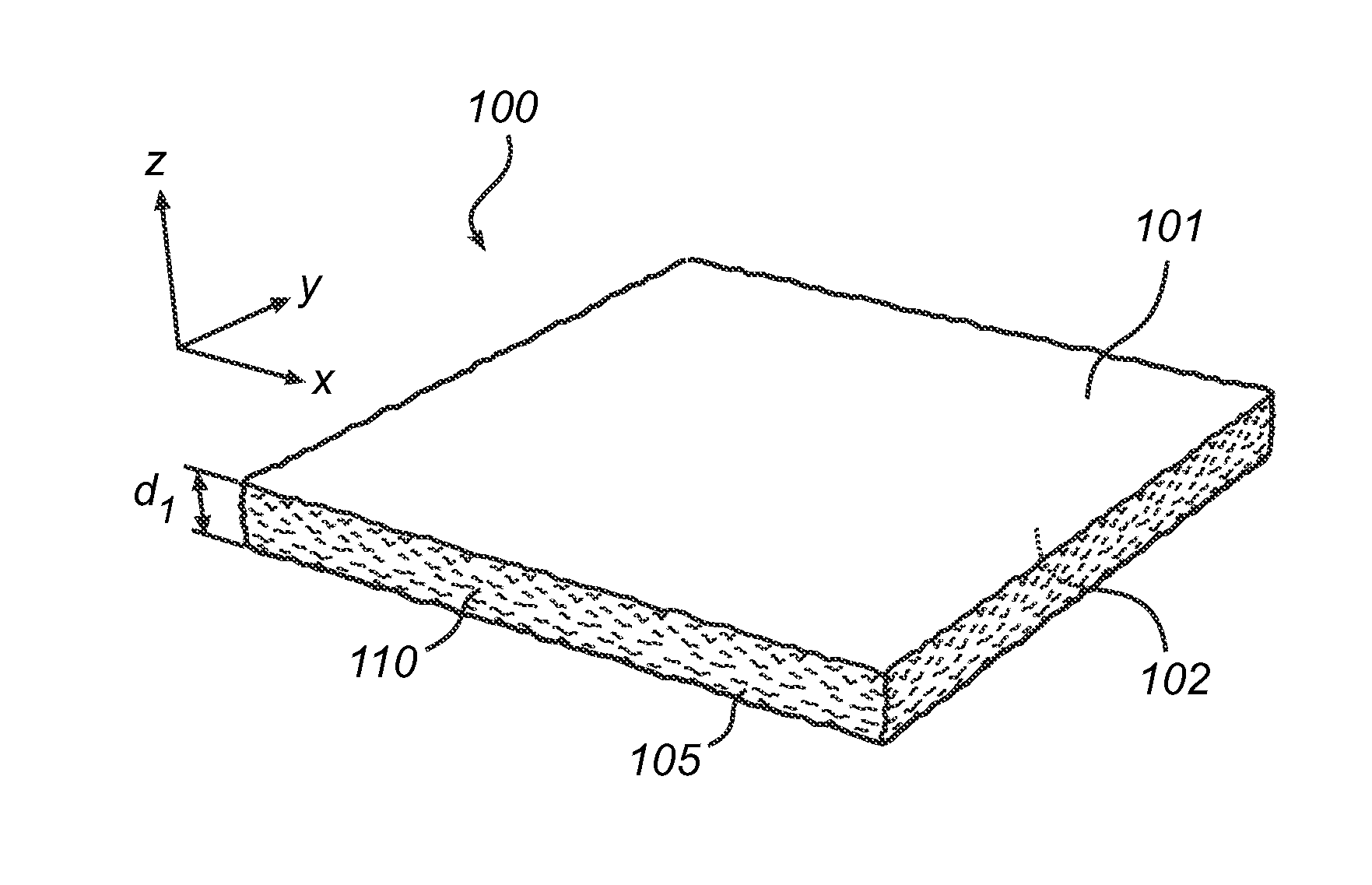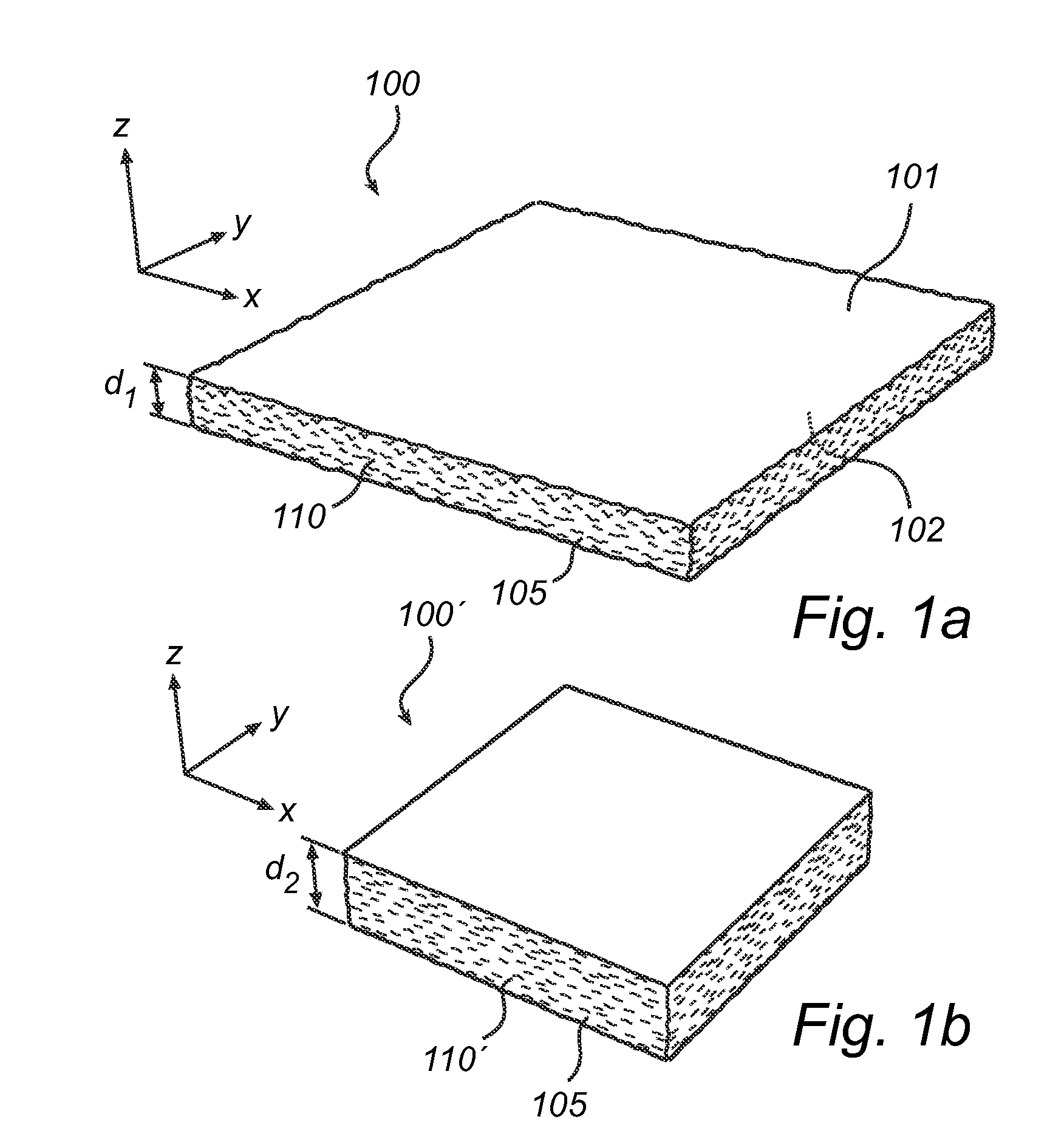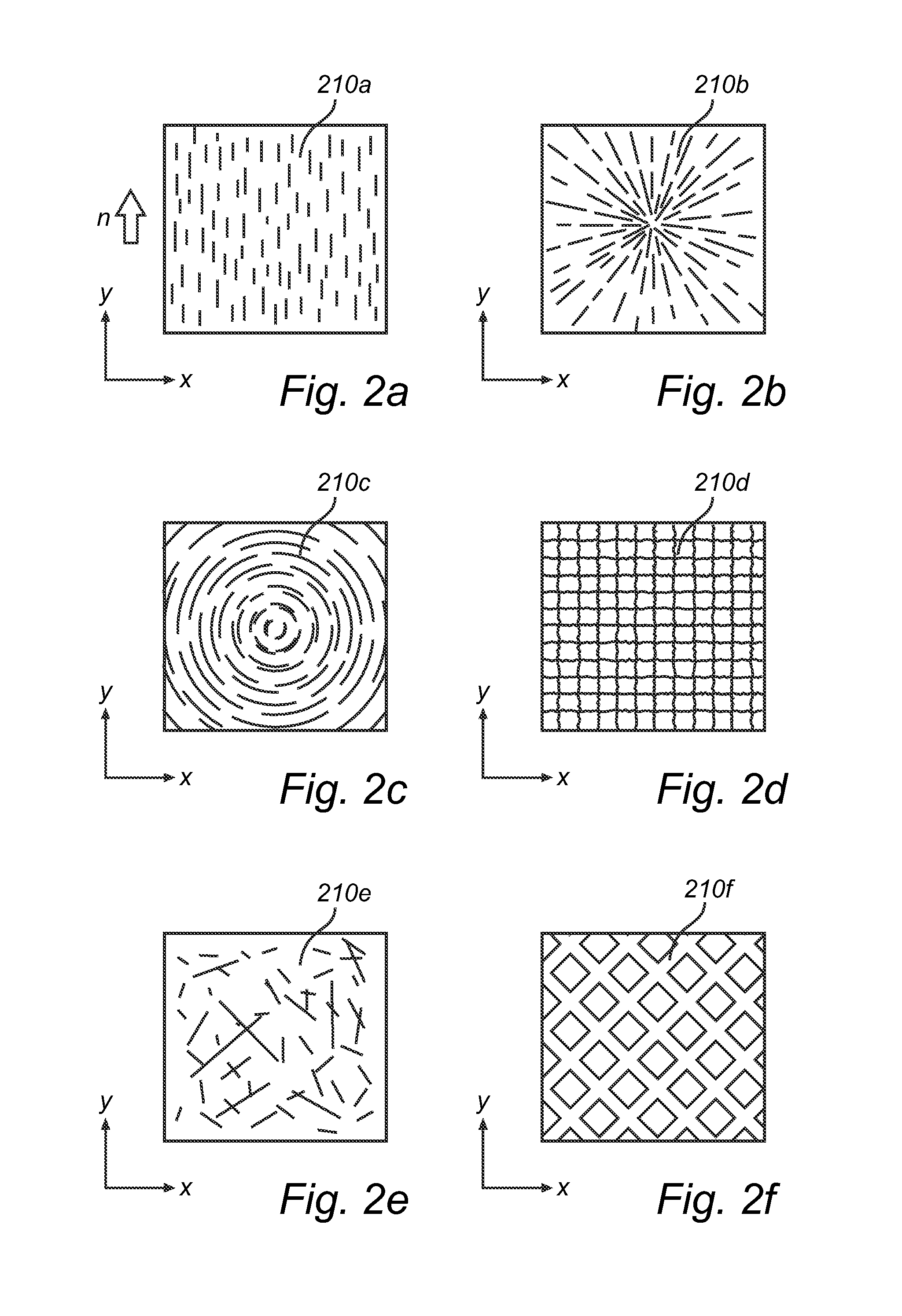Thermal interface material
a technology of thermal interface materials and materials, applied in the direction of lighting support devices, semiconductor/solid-state device details, lighting and heating apparatus, etc., can solve the problems of huge cost saving, achieve the effect of facilitating the increase of the thickness of the tim layer, facilitating the effect of improving the surface contact, and being convenient to us
- Summary
- Abstract
- Description
- Claims
- Application Information
AI Technical Summary
Benefits of technology
Problems solved by technology
Method used
Image
Examples
Embodiment Construction
[0026]Exemplifying embodiments of the thermal interface material, TIM, and its corresponding thermal interface application, methods on how to produce such TIM and thermal interface will now be described herein under.
[0027]The steps of the methods are described as a continuous sequence, however some of the steps may be performed in another order or some additional process step may be interleaved.
[0028]Referring now to FIG. 1a), which illustrates an embodiment100 of a TIM according to the present invention, the TIM 100 comprises a TIM-layer 105, i.e. a substantially flat material structure with and upper surface 101 and a lower surface 102 having a thickness d1 in the z-direction which is small compared to the extent of the physical dimensions of the layer in the xy-plane. A shrinkage material 110 is distributed within the TIM layer 105. The shrinkage material 110 is in this exemplifying embodiment heat sensitive polymer shrinkage fibers added to the TIM layer 105 material during manu...
PUM
 Login to View More
Login to View More Abstract
Description
Claims
Application Information
 Login to View More
Login to View More - R&D
- Intellectual Property
- Life Sciences
- Materials
- Tech Scout
- Unparalleled Data Quality
- Higher Quality Content
- 60% Fewer Hallucinations
Browse by: Latest US Patents, China's latest patents, Technical Efficacy Thesaurus, Application Domain, Technology Topic, Popular Technical Reports.
© 2025 PatSnap. All rights reserved.Legal|Privacy policy|Modern Slavery Act Transparency Statement|Sitemap|About US| Contact US: help@patsnap.com



